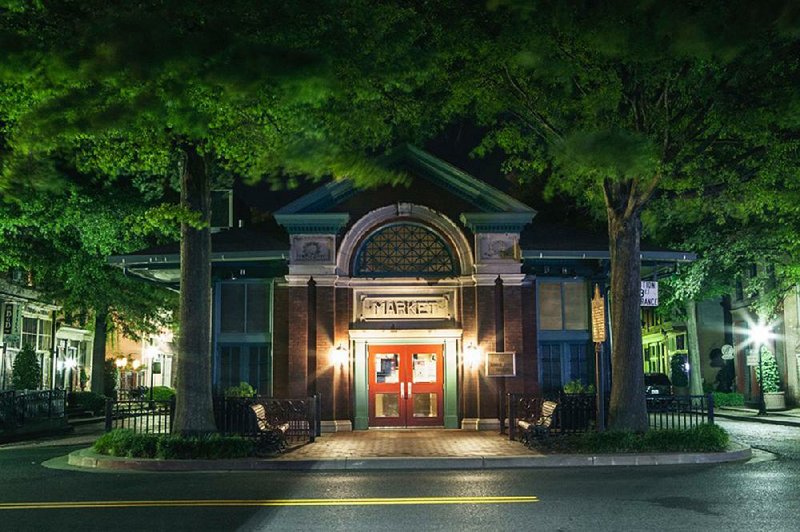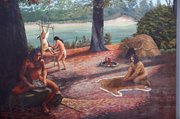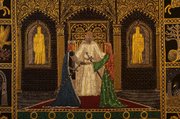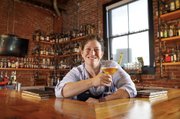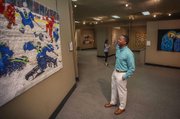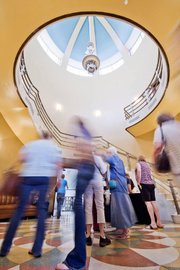PADUCAH, Ky. -- Here's an intriguing travel question -- when you think of a charming, culturally significant, Southern river city, what springs to mind? All the usual suspects, of course: New Orleans. Memphis. Charleston. Savannah.
One that probably isn't on your list, but just might be the quintessential Southern river town is Paducah. In this city at Kentucky's extreme western edge, four rivers define the way of life. The Ohio and Tennessee rivers meet here, with the Mississippi and Cumberland rivers located just a few miles away.
Where to Stay: The 1857 Hotel; the1857hotel.com. This beautifully renovated property just a block from Market Square and an easy walk from the riverfront, has 10 rooms with decor dating to the original 19th-century building — vaulted ceilings and exposed brick walls.
The 1857 Hotel has a large first-floor bar and, in the spirit of Paducah’s artsy vibe, rotating exhibits in the public areas.
Where to Eat: The Freight House, freighthousefood.com; Max’s Brick Oven, facebook.com/maxsbr…; Kirchoff’s Bakery, kirchhoffsbakery.net
FYI: paducah.travel
Walking through Paducah's historic downtown, you'll see elements of the other Southern gems -- courtyards with tinkling fountains a la Savannah. Musical melodies trilling through the night just like in Memphis. And if you stand in front of Market Square, you might think you were at New Orleans' French Market.
And yet Paducah has something that none of these cities do -- designation as a UNESCO Creative City, one of only nine in the United States.
Along with Santa Fe, N.M.; Tucson, Ariz.; Austin, Texas; San Antonio; Seattle; Detroit; Kansas City, Mo.; and Iowa City, Iowa, Paducah has been tapped for offering something unique to the culture of its region in one of seven categories: literature, music, design, film, media arts, gastronomy and crafts and folk art.
In Paducah's case, the designation is for crafts and folk art, due in large part to its incomparable National Quilt Museum.
If you visit the museum thinking that this is a journey back to the days of quilting bees and your great-grandmother's patchwork offerings, well you're partly right.
Opened in 1991, the National Quilt Museum does provide insight into the history of quilt-making as a form of American self-expression, but it goes far beyond that. Its three galleries covering 27,000 square feet showcase the finest quilt and fiber art in the world.
With 500 quilts in its permanent collection, the museum has something to suit every taste -- from a small quilt the size of a bath mat depicting pop icon Prince to an epic quilt illustrating scenes from Gandalf and Bilbo Baggins' journey in J.R.R. Tolkien's The Hobbit. Spotting all the intricate details in this one would take a day of standing and staring.
If the quilts have put you in an artistic frame of mind, stroll a couple of streets over to the riverfront to see "Paducah Wall-to-Wall," a three-block long collection of murals by renowned American muralist Robert Dafford.
The backdrop for these colorful displays of art is the protective wall built along the bank of the Ohio following a disastrous 1937 flood. The 50 murals painted on it depict the city's history from pre-Colonial days to the mid-20th century.
If by now you are inspired to test your own arts smarts, head over to Make Paducah art gallery, where Kijsa Houseman, a classically trained fine artist and muralist, offers a wide range of hands-on projects from calligraphy and watercolor to print making.
As she guided me through a fun session of making photo transfers (similar to brass rubbing), she confided her own philosophy of art.
"I want Make to be a place where anybody of any level can come in and get creative," she says.
ARTIST RELOCATION PROGRAM
Creative is a word that is frequently used to describe Paducah. But creativity wasn't the first thing artist Mark Barone had in mind when he began petitioning police in the 1980s to remove a phone booth directly below his window in the city's Lower Town neighborhood.
Night after night, Barone watched as a steady stream of people stood in line to use the phone. Knowing what that meant, he engaged in a one-man crusade to clean up the streets. Successful in his efforts, he then suggested city fathers bring in artists to replace drug dealers in an attempt to revitalize Paducah's oldest historic neighborhood.
"Thus, began a partnership between the city, its citizens and Paducah Bank & Trust which ultimately resulted in the nationally acclaimed Artist Relocation Program," says Nathan Brown, a ceramics artist who also moonlights as a musician.
Begun in 2000 when funding for the arts nationwide had been drastically slashed, the program offered qualifying artists the opportunity to buy a house in the neighborhood at an extremely low rate (sometimes for as little as $1.)
Response was immediate. Soon, 50 artists were living in Lower Town's mixed Queen Anne dwellings, galleries exhibiting their work had popped up, and the relocation program had become a national model for using the arts as an economic development tool.
With the neighborhood safely secured, many of the original artists moved on. Currently, 20 live and work here, including Shand Stamper and Mitch Kimball, who moved from North Carolina 11 years ago.
Stamper, whose specialties are 3-D design and metalsmithing, and Kimball, a ceramicist, painter and art educator, are enamored of Paducah's river town character in general, and their neighborhood's character in specific.
"Along with painters, watercolorists, batik and fiber artists, there are a host of other creative types who wanted to call Lower Town home," says Kimball, "teachers, small business owners, art collectors and chefs."
Perhaps Stamper sums it up best.
"The Artist Relocation Program cultured the whole population to expect something different," she says.
A (CULINARY) STAR IS BORN
The city's creativity doesn't stop with traditional artists. There is a robust theater scene, a symphony orchestra, 13 museums, and a rising star chef who is making her mark not just in Paducah, but around the country.
Sara Bradley, chef/owner of the Freight House, recently took her commonwealth cuisine to the James Beard House in New York, and by all accounts, wowed Manhattanites, who can be somewhat blase when it comes to food.
As Paducah's first farm-to-table restaurant, the mission is to bring the freshest of local ingredients (all sourced within a day's drive) to dishes that define the flavor of the New South.
Bradley's signature dish is Kentucky Silver Carp with bean and mushroom succotash and Nashville hot sauce, but on my visit I opted to make a meal of several starters, such as the ruby beets with herbed yogurt and coriander; deviled eggs with Creole remoulade and parsley; cold golden carrot soup with ginger, Meyer lemon and peanuts, and shrimp cocktail with spicy horseradish, burnt lemon and dill.
I can't remember when I've had such a creative dining experience, and that goes double for the French toast bread pudding with drunk peaches, candied bacon and vanilla bean ice cream created by Bradley's mother, Bebe, who doubles as her pastry chef.
The Freight House's bar is as impressive as its menu, with truly remarkable classic cocktails, and in the true spirit of Kentucky, more than 300 bourbons to choose from.
Finally, don't leave town without stopping for coffee at Piper's, or if you're hungry, for a pizza at the Mellow Mushroom. They are just two of the eight businesses that now occupy the city's former Coca-Cola bottling plant.
As important as getting your caffeine or pizza fix, is marveling at a landmark building that is one of the best examples of Art Deco architecture and design that I have ever seen.
Standing in the rotunda on the 9,000-square-foot terrazzo tile floor, looking up at the neon dome and admiring the sweeping double staircase, I couldn't help but think that this is just what I would expect from a UNESCO Creative City.
Travel on 10/14/2018
